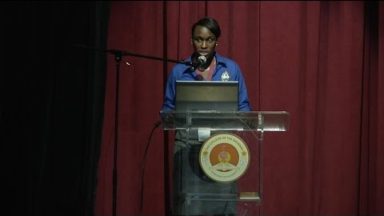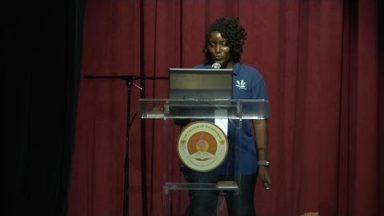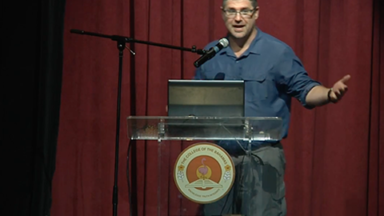Hurricane Joaquin: Effects Upon the Coastal Geology of San Salvador Island, Bahamas
Presented by Michael Savarese
Michael Savarese, Ilya Buynevich, Jon Caris, H. Allen Curran, Bosiljka Glumac, and Lisa Park Boush
On 28 September 2015, Hurricane Joaquin formed in the SW Atlantic, making landfall in the Bahamas as a CAT 4 hurricane several days later. The island of San Salvador sustained significant infrastructural effects, with more than 80% of the houses receiving damage. An assessment of the storm impact on the coast was undertaken in January 2016 using orthophotos and digital elevation models generated from drone flights, ground-penetrating radar imaging to assess subsurface indicators, and ground surveys to document erosion. Storm surge was not a critical phenomenon for most of the island, and persistent flooding and breaching of coastal barriers was not common. The south shore was one region where tidal amplification and wave action were of consequence. Here, 5-meter-high cliffs were overtopped, causing erosion at the leading edge and significant movement of boulders within an extensive, 6.3 ha boulder field. New boulders, as large as 3 m in diameter, were generated, and older boulders from prior storms, estimated to weigh 1-3 tons, moved up to 26 m inland. The principal road was inundated by debris and awaits repair. Along the east and west coasts, hurricane impact caused substantial dune scarping and some overtopping. However, no dune systems were breached. Overtopping into backdune areas occurred at numerous locations along both coasts, onto the circum-island Queen’s Highway, and into a few swale lakes. Coring of 4 lakes revealed a record of the event as depositional tempestites. Scarped dunes lost as much as half their volume with retreat as far as the dune crest. Some foredune scarps are already showing signs of repair via eolian ramp formation. These scarps will remain as recognizable subsurface features in future geophysical images. A rejuvenated tidal channel was scoured along the southeastern coast, establishing an ephemeral connection to Pigeon Creek. A massive overwash fan of approximately 1 ha now blocks the mouth of this channel. Overall, no significant, irreparable coastal change occurred as a consequence of Joaquin. Although the storm imposed economic hardship, much of its geomorphologic legacy will be modified by fairweather processes.







Recent Comments